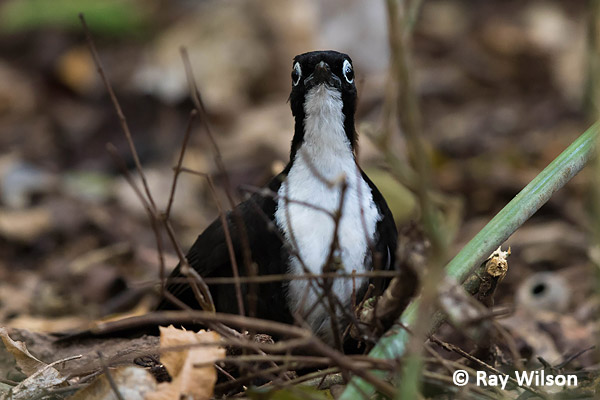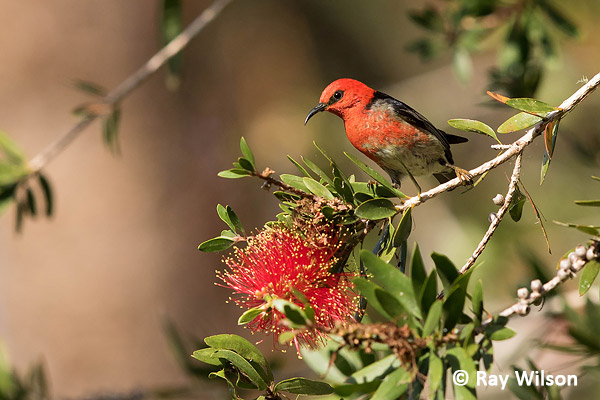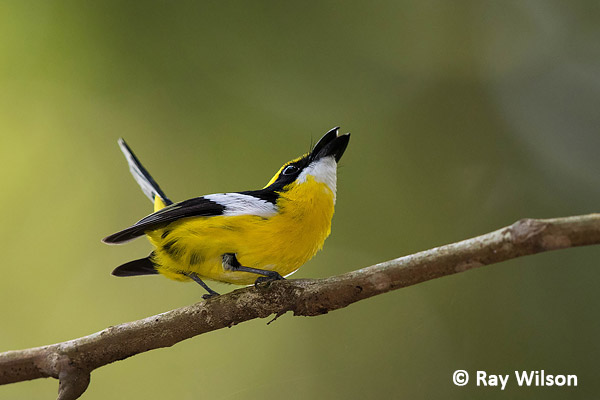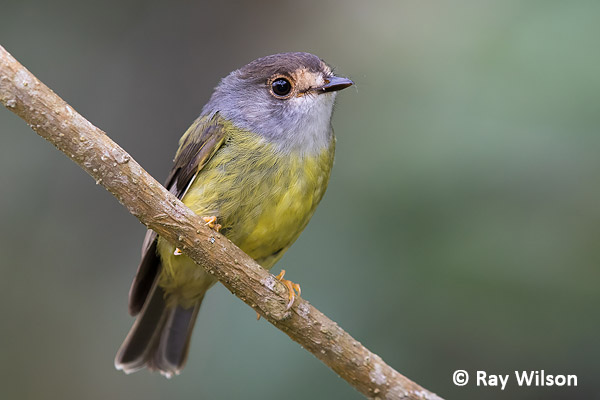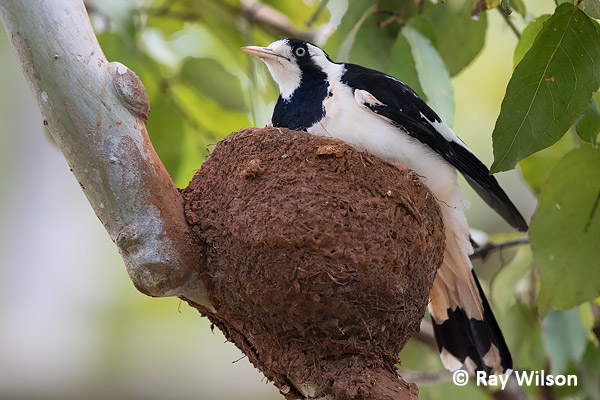
- Home
- Photography Tours
- Diary / Blog
- Galleries
- Foreign Trips
- Tasmania 2016
- NE Queensland 2016
- Western Alps 2016
- NE Spain 2016
- Australia's Wet Tropics 2015
- Australia's Top End 2015
- SW Australia 2015
- Switzerland 2015
- Andalucia 2015
- Belize 2015
- Australia 2014
- Switzerland 2014
- Belize 2014
- Bahama Islands 2014
- Switzerland 2013
- Ecuador 2012-2013
- Florida 2011-2012
- Vancouver Island 2011
- Australia 2010
- Peru 2008
- Bulgaria 2007
- Lesvos 2006
- California 2006
- New Zealand 2005
- Extremadura 2005
- Goa, India 2004
- The Gambia 2003
- About
Northeastern Queensland, Australia
September - November 2016
Part 1
Atherton Tablelands, QLD, Australia
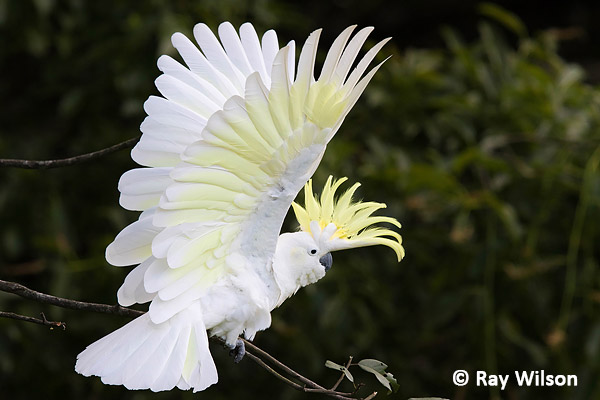
displaying Sulphur-crested Cockatoo (Cacatua galerita)
September saw me arrive in Cairns for the start of what has turned into my now annual 3-month pilgrimage to Australia.
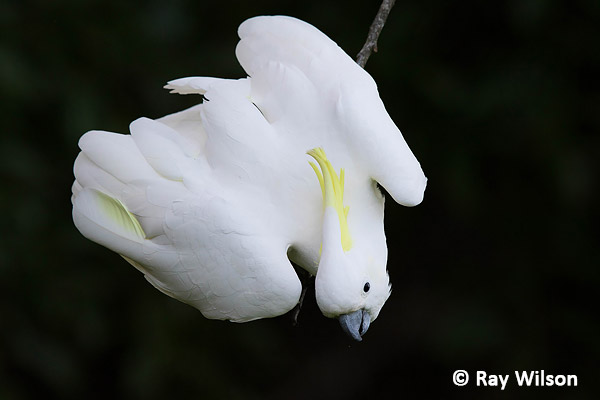
Sulphur-crested Cockatoo (Cacatua galerita)
The area around Cairns is by far my favourite part of Australia and this year I decided to spend a couple of months there.
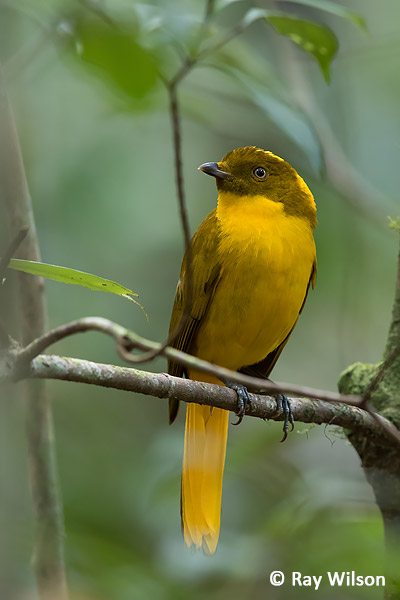 |
 |
Golden Bowerbird (Prionodura newtoniana)
The Atherton Tablelands are particularly special. Unlike most of Australia, where you have to drive enormous distances between places of interest, on the Tablelands you never have to drive far to explore a wide diversity of habitats, from montane rainforest to wetlands and dry sclerophyll bushland, and during my stay I saw, and photographed, over 200 species of birds within a 50km radius of Atherton.
male Chowchilla (Orthonyx spaldingii)
Chowchillas are probably one of the hardest species on the Tablelands to get good photographs of. Not because they are uncommon or particularly difficult to find, but because they spend all their time scratching around in the leaf litter in gloomy areas of dense rainforest understorey where you will be struggling to get a shutter speed higher than 1/20th second at f4 and ISO1600. The photo above was taken at 1/8th of a second! At that speed, even with perfect long-lens technique, the slightest movement by the bird will produce a blurred photo, so I was lucky that it stayed absolutely still for this one shot.
Of course, you can get higher shutter speeds if you use flash as the main light but that, in my opinion, is something that should always be avoided as it invariably gives unsatisfactory results by producing unnatural-looking lighting, freaky reflections in the eyes and failing to properly light the background.
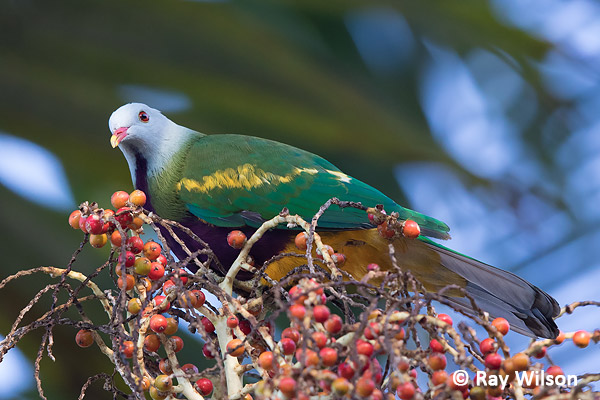
Wompoo Fruit-dove (Ptilinopus magnificus)
Wompoo Fruit-doves are fairly common in the rainforests of the Atherton Tablelands, although they can be quite shy at times and not always easy to find.
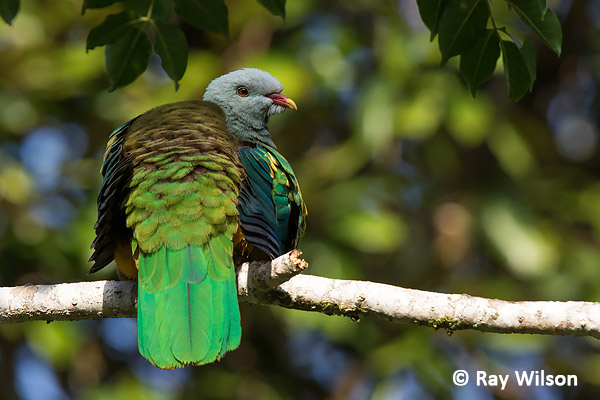
Wompoo Fruit-dove (Ptilinopus magnificus)
In the majority of cases, all you see of Topknot Pigeons is them flying overhead or perched on a very tall tree about 500m away. Close views like this are a special treat!
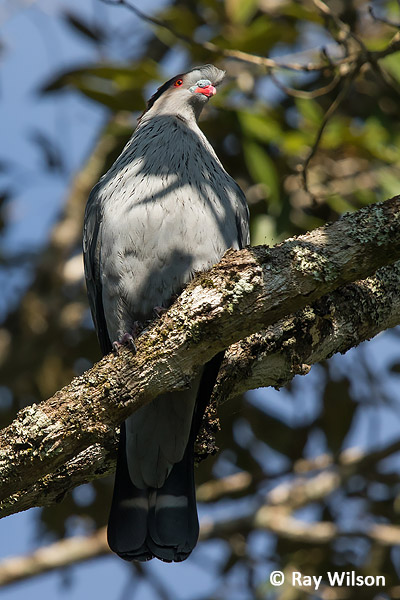
Topknot Pigeon (Lopholaimus antarcticus) |
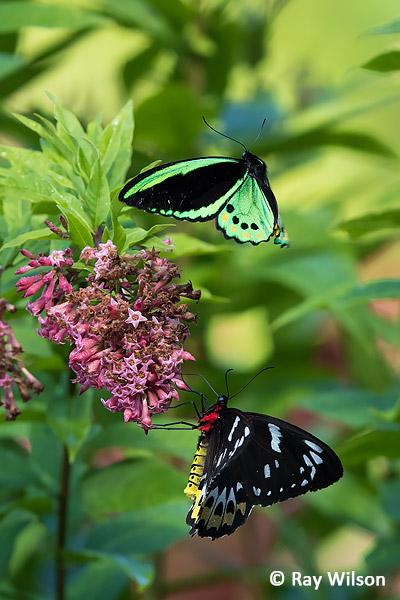
male & female Cairn's Birdwings (Ornithoptera euphorion) |
With a wingspan of up to 18cm, Cairns Birdwings are larger than many of the nectar-feeding birds and provided a spectacular sight as they fluttered around the flowering trees and bushes. They seemed much commoner this year than in the previous years I have visited and were especially common in the garden at Lake Barrine.
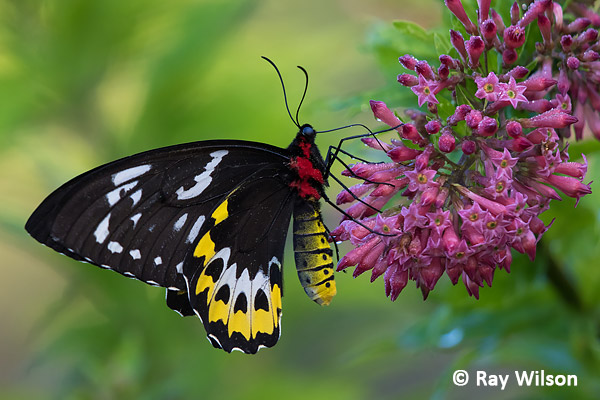
female Cairn's Birdwing (Ornithoptera euphorion)
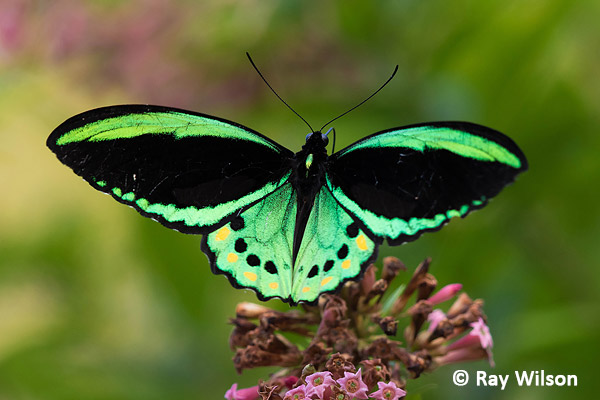
male Cairn's Birdwing (Ornithoptera euphorion)
Scarlet Honeyeater is the most colourful of the honeyeaters found on the Tablelands and were common at times, although whether you see them or not is highly dependent of which bushes are in flower on any particular day.
Scarlet Honeyeater (Myzomela sanguinolenta)
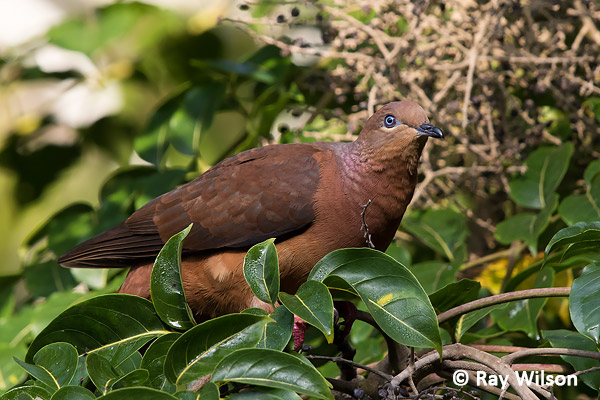
Brown Cuckoo-dove (Macropygia phasianella)
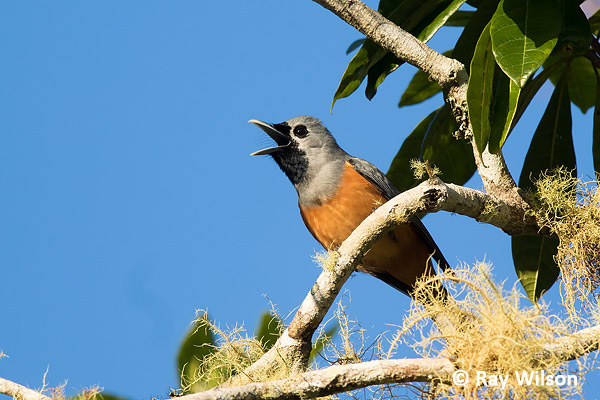
Black-faced Monarch (Monarcha melanopsis)
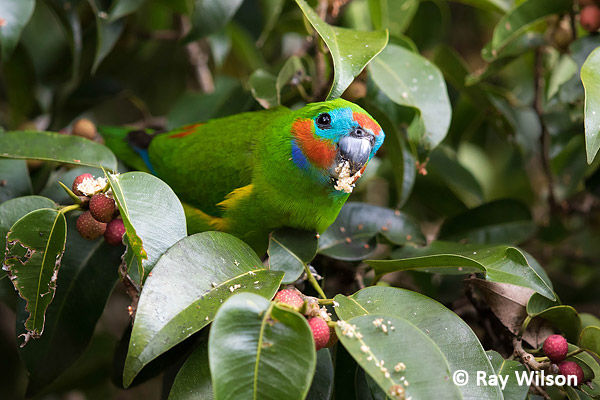
male Double-eyed Fig-parrot (Cyclopsitta diophthalma)
Double-eyed Fig-parrots were not visiting their usual trees in such large numbers as they did last year, but there was usually at least a few feeding on the fruits once they had ripened up.
Yellow-breasted Boatbill (Machaerirhynchus flaviventer)
Yellow-breasted Boatbills spend most of their time in the canopy, but they do occasionally venture down low enough to photograph.
Pale-yellow Robin (Tregellasia capito)
Magpie-lark (Grallina cyanoleuca)
Ray Wilson owns the copyright of all images on this site.
They may not be used or copied in any form without prior written permission.
raywilsonphotography@googlemail.com
